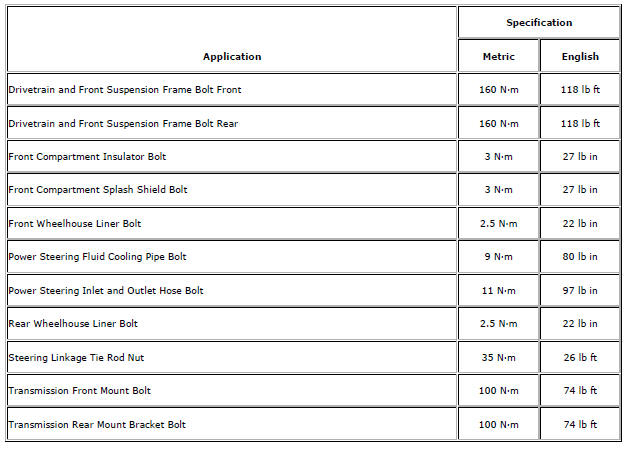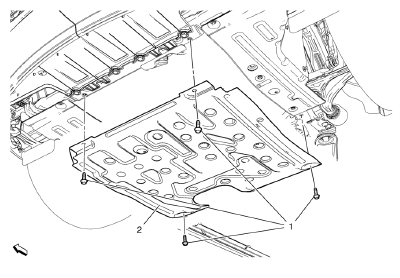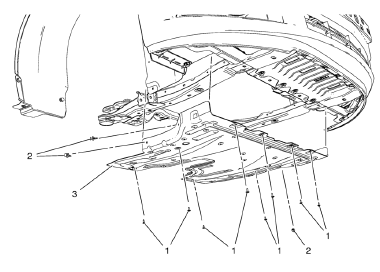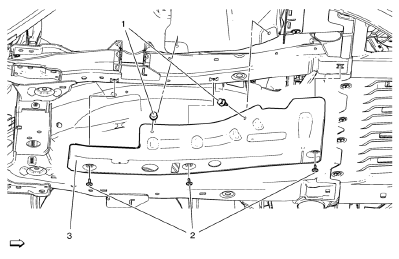Chevrolet Cruze Repair Manual: Frame and Underbody
Specifications

Engine Shield Replacement

Preliminary Procedure
Raise and support the vehicle. Refer to Lifting and Jacking the Vehicle.
- Engine Shield Bolt (Qty: 4)
Caution: Refer to Fastener Caution in the Preface section.
Tighten 40 N·m (30 lb ft)
- Engine Shield
Front Compartment Insulator Replacement

Preliminary Procedure
Raise and support the vehicle. Refer to Lifting and Jacking the Vehicle.
- Front Compartment Insulator Screw (Qty: 8)
Caution: Refer to Fastener Caution in the Preface section.
Tighten 3 N·m (3 lb in)
- Front Compartment Insulator Plastic Retainer (Qty: 3)
- Front Compartment Insulator
Front Compartment Splash Shield Replacement

- Front Compartment Splash Shield Retainer (Qty: 2)
- Front Compartment Splash Shield Bolt (Qty: 3)
Caution: Refer to Fastener Caution in the Preface section.
Tighten 3 N·m (27 lb in)
- Front Compartment Splash Shield
- Drivetrain and Front Suspension Frame Replacement
- Drivetrain and Front Suspension Frame Insulator Replacement
 Ultra High Strength Dual Phase Steel
Ultra High Strength Dual Phase Steel
This information provides repair recommendations and general guidelines for
steel classified as Ultra High Strength Dual Phase Steel (Dual
Phase Steel with a tensile strength greater than 800 MPa), ...
 Drivetrain and Front Suspension Frame Replacement
Drivetrain and Front Suspension Frame Replacement
Special Tools
CH 904 Underframe
CH 49289 Centering Adapter
For equivalent regional tools, refer to Special Tools. ...
Other materials:
Installation Procedure
Align the rear compartment floor panel.
Drill 4 mm (3/16 in) for rivets along the edges of the rear compartment
floor were you cant apply a resistance spot welder.
Clean and prepare the attaching surfaces for
spot welding and riveting.
Apply structural adhesive to all a ...
Water Hose Test
Note: Use a water hose without the nozzle attached.
Have an assistant inside of the vehicle i 1. n order to locate the leak.
Begin testing at the base of the window or the windshield.
Slowly move the hose upward and across the top of the vehicle.
...
Removal Procedure
Warning: Refer to Approved Equipment for Collision Repair Warning in the
Preface section.
Warning: Refer to Collision Sectioning Warning in the Preface section.
Warning: Refer to Glass and Sheet Metal Handling Warning in the Preface section.
Disable the SIR System. Refer to SIR Dis ...
